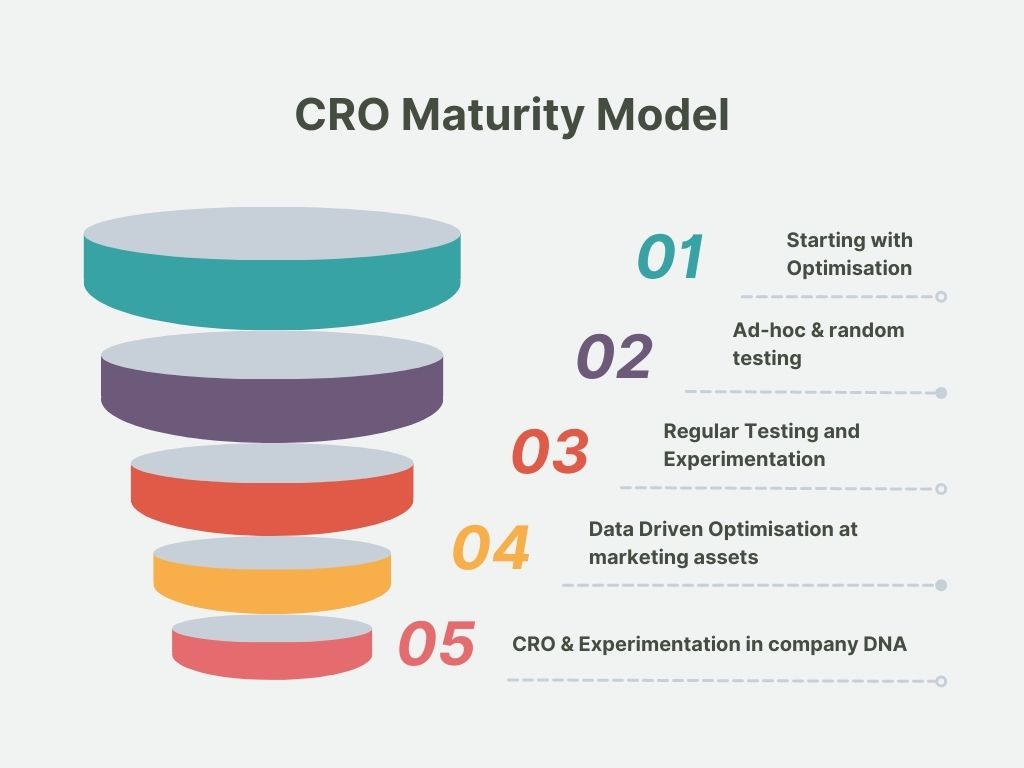Conversion rate optimization
Want higher revenue from the traffic you’re already getting? Don’t pour more ad spend into a leaky funnel. Let our conversion rate optimization team find & fix the weakest spots in your website so you get the wins you want.


“We had worked with some of the biggest UX and CRO agencies, but it always felt like they didn’t truly understand our website. From our first conversation with you, you had already pinpointed key issues, which showed us we were speaking to the right experts.”
Benefits of Conversion Rate Optimization (CRO)
Conversion rate optimization (CRO) is a strategy aimed at identifying what motivates or hinders users from taking actions like making a purchase or signing up on your website. By analyzing user behavior and pain points, CRO allows you to test and implement data-driven solutions, such as A/B testing, to enhance user experience. The ultimate goal is to increase conversions, boost revenue, and drive long-term profitability by optimizing the overall performance of your website.
When will CRO give you Return on Investments ?
We offer CRO services specifically designed for medium to large enterprises. To benefit from our services, your website should receive at least 50,000 unique visitors per month. For smaller companies, we recommend exploring our customer acquisition service to help optimize your traffic and boost performance.
What we Delivery in CRO?
Our conversion rate optimization (CRO) programs start at $5,000 per month for a 12-month engagement. We also offer project-based services, such as running 10 tests over a 3-month period. Our full programs cover everything from analytics audits and maturity assessments to user research and test execution. You’ll collaborate with a dedicated team of CRO strategists, designers, developers, QA, and project managers to execute the program and ensure optimal results.
Conversion Rate Optimisation Process
Discovery
We start by thoroughly auditing your testing and analytics tools to ensure the data is accurate and reliable. Additionally, we take the time to understand your business, goals, and current processes for running tests, allowing us to build a tailored approach for your specific needs.

CRO Launch
We hit the ground running with multiple tests, focusing on building momentum and driving velocity from the start. We also gather key stakeholders from across your organization to align testing objectives with broader business goals and ensure everyone is on the same page about the program’s direction and impact.
CRO Maturity Audit
The CRO Audit will include evaluation of your performance in:
- People & Skills
- Strategy & Culture
- Tools & Technology
- Process & Methodology
From this, we provide guidance on where and how you can improve your experimentation practices.


Research
We initiate the first research sprint, a process that continues throughout the program. Various research methods are employed based on specific goals. These insights fuel hypotheses for testing and shape persona development and customer journey mapping.
Our process includes continuous customer research to consistently generate fresh insights and new hypotheses, ensuring a data-driven approach to optimization.
This ongoing research allows us to adapt and refine strategies in real-time, ensuring we stay aligned with user behavior and business goals.
Creative Strategy Sessions
We’ll audit your testing and analytics tools to ensure we have reliable data. We also learn more about your business and the current procesWe craft innovative test concepts, leveraging UX design principles and consumer psychology to maximize the potential success of each experiment. These creative solutions are specifically tailored to improve user experience and drive better performance, ensuring every test is strategically aligned with optimizing conversions and achieving meaningful results.s for running tests.

Experimentation Prioritization
We develop a detailed execution plan for each experiment, outlining specific metrics to measure and improve. This roadmap is focused on key revenue levers, such as customer acquisition, onboarding, engagement, retention, and monetization. By aligning each experiment with clear goals, we ensure that every test drives measurable improvements and contributes to overall business growth.
Enhancements & Optimization
Leveraging insights from the CX maturity audit, prioritized hypotheses, and the overall customer experience vision, we create a strategic optimization roadmap. This roadmap is designed to guide targeted improvements across key areas, ensuring that each optimization effort aligns with long-term business goals and delivers measurable results.

Kaizen - Continuous Improvements
From day one, we dive into testing, launching cycles of experiments, conducting thorough QA checks, and performing detailed post-test analysis. Results are shared in comprehensive experiment scorecards or through an experiment knowledge base that we help you establish. This approach ensures consistent improvement and transparency throughout the process, allowing you to track progress and outcomes effectively.
Conversion Rate Optimization (CRO) FAQs
Why is Conversion Rate Optimization (CRO) Essential?
CRO plays a vital role for several reasons:
- It’s a scientific, data-driven process for boosting revenue.
- It prevents actions that could negatively impact conversions or waste resources.
- It allows for a deeper understanding of your customers’ behavior and preferences.
- CRO fosters informed, data-backed decisions, reducing the reliance on instinct alone.
This systematic approach ensures more predictable, sustainable business growth.
What is an Achievable Conversion Rate?
A realistic conversion rate depends on factors such as your industry, product or service type, pricing, brand recognition, traffic sources, and user experience. There isn’t a universal benchmark, as it varies widely. The key is to focus on continuous improvement.
It’s also important to recognize that conversion rate is just one metric—higher conversions don’t always translate into more revenue. That’s why it’s essential to also track metrics like average order value (AOV), profit, and total revenue for a fuller picture of success.
How long should an A/B test run?
Typically, A/B tests last for one to two business cycles, often 7, 14, or 21 days, depending on the specific test and client needs. The duration is customized based on factors like traffic and business context.
Before launching, we calculate the Minimum Detectable Effect (MDE), which determines the smallest measurable change with statistical significance—usually at a 95% confidence level. This ensures we have enough traffic and conversions for each variation to produce accurate, reliable results.
What kind of ROI can you expect?
At 9 Catalyst, our goal is to ensure your customers are satisfied and deliver the highest possible return on your investment. We typically aim to generate 2-5 times the ROI from your investment in our services. Our track record speaks for itself, with clients seeing long-term ROI, even after working with us for over six years.
What areas can you experiment on?
Nearly everything! We specialize in running experiments across various touchpoints, collaborating with your marketing and product teams. From testing web pages, landing pages, onboarding flows, and in-app experiences, we focus on key revenue metrics like customer acquisition, onboarding, engagement, retention, and monetization. These experiments are designed to drive exponential revenue growth. While the tools and metrics may vary across different areas, our approach to testing, learning, and optimizing remains consistent and results-driven.
What metrics should be tracked during conversion rate optimization?
At 9 Catalyst, conversion rate optimization isn’t just about conversions alone. Focusing only on conversions could inadvertently reduce average order value (AOV) or increase returns, impacting overall revenue and profit.
To ensure a holistic approach, we track multiple metrics alongside conversion rates, including AOV, customer lifetime value (CLTV), revenue per visitor, trial to paid ratio, average time spent and many more customised metrics based on your business model. This comprehensive tracking ensures that all aspects of performance are optimized for sustainable growth.
Should CRO be a one-time or ongoing effort?
Conversion rate optimization (CRO) should always be an ongoing process, not a one-time effort. Continuous CRO ensures that your business keeps evolving, unlocking exponential revenue growth by consistently improving user experience and conversion metrics.
As markets and customer behaviors change, ongoing CRO helps you stay ahead of the competition and overcome any plateaus in growth. By pushing past your local maximum, you can continue to scale and achieve long-term success.
What is a test hypothesis or experimentation ?
A hypothesis or an experiment is an testable assumption.
It typically follows a structure like: If we do [X], then we expect [this result] because [rationale based on research or data].
This format allows for measurable outcomes, ensuring that the hypothesis can be validated or refuted based on the experiment’s results.
Book a discovery call now
Start your journey with our advisor 1:1

